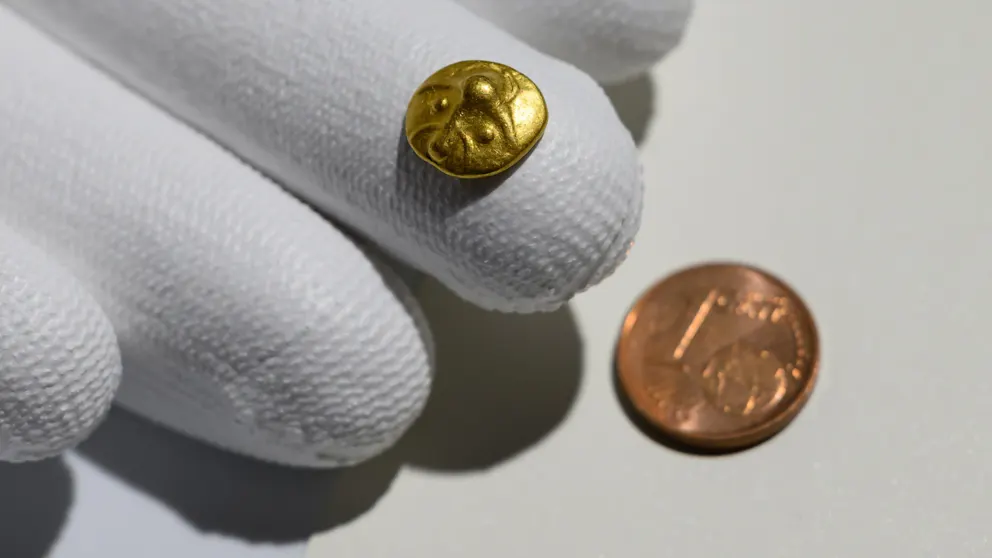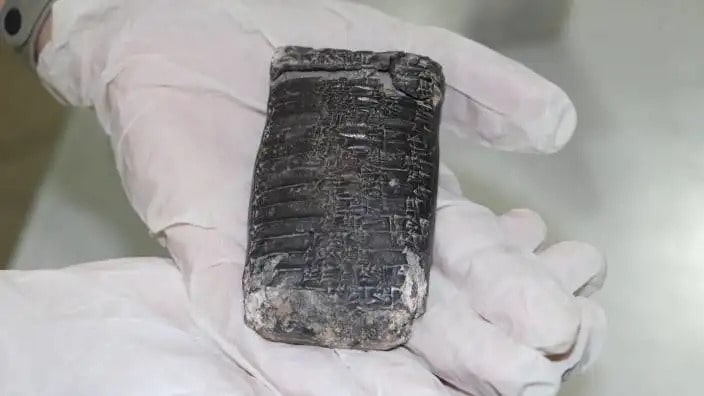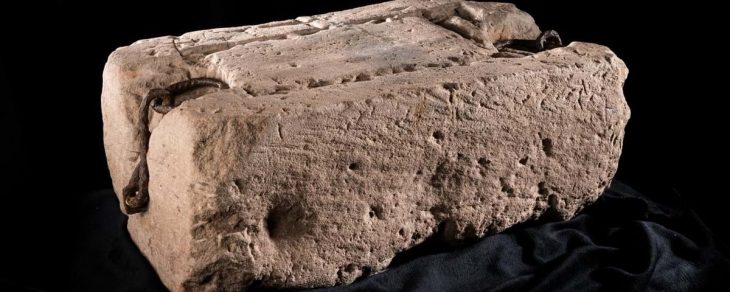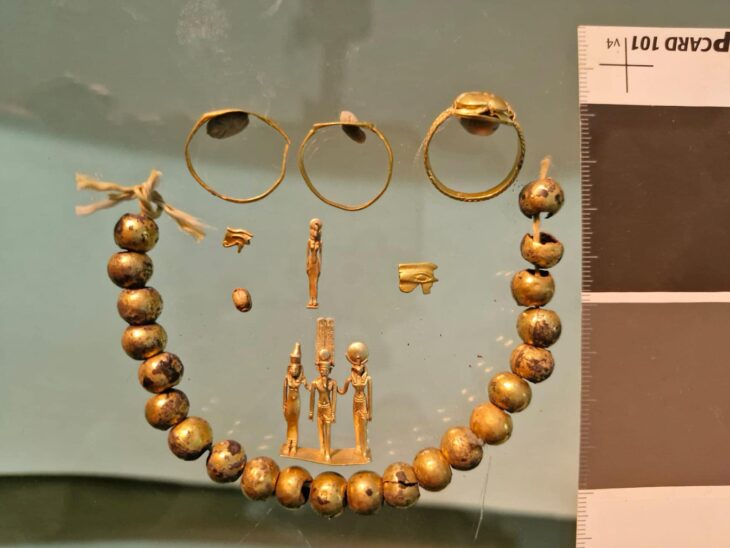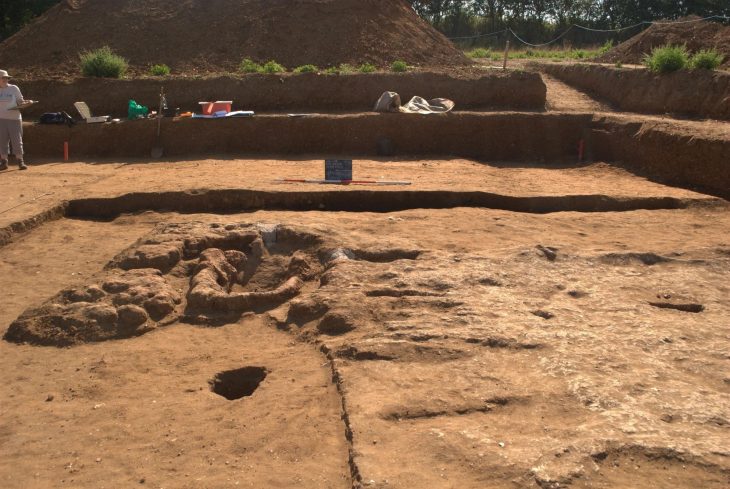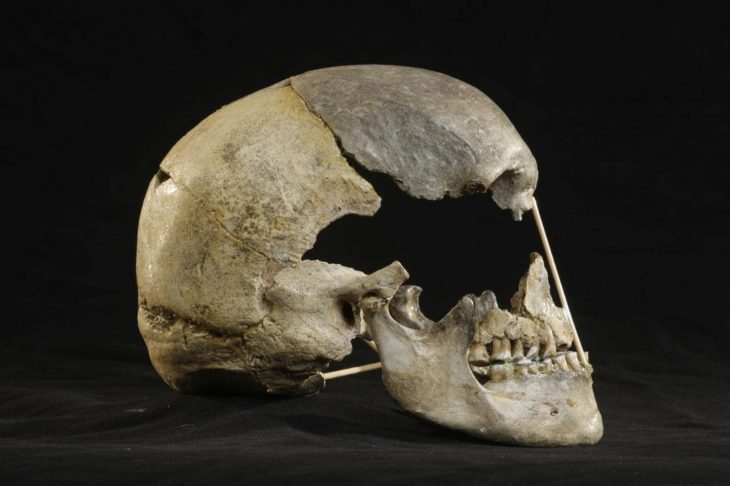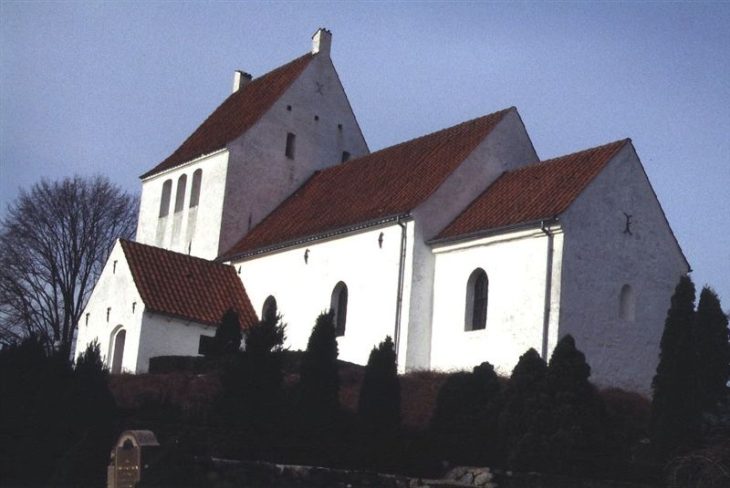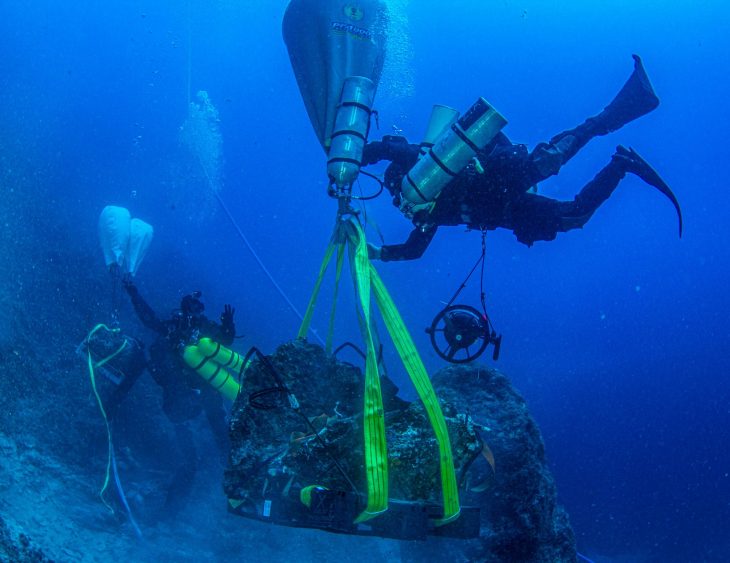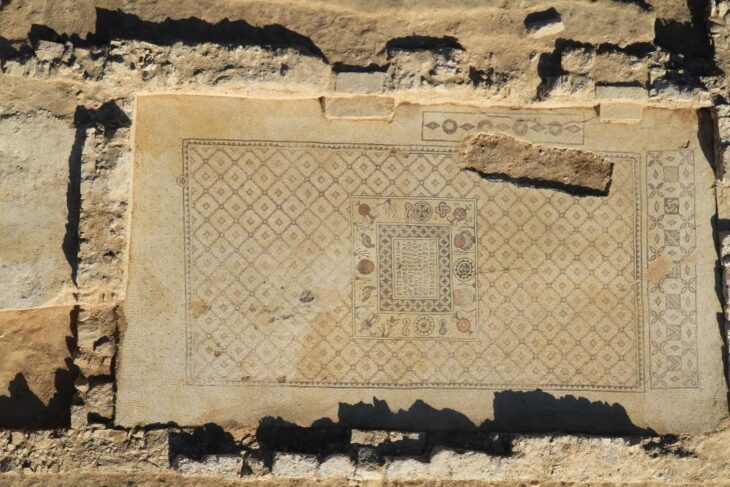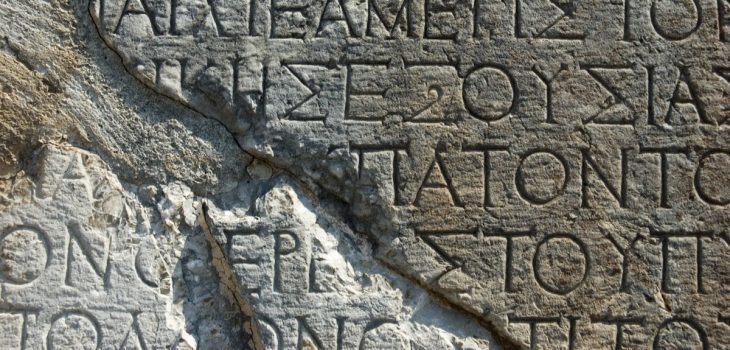A small yet extraordinary discovery has rewritten Saxony’s numismatic history. A certified hobby detectorist, Daniel Fest, uncovered what is now recognized as Saxony’s oldest known coin — a 2,200-year-old Celtic gold quarter stater — in a field near Leipzig-Gundorf. The find, weighing barely two grams, was officially presented this week by the State Office for Archaeology (Landesamt für Archäologie Sachsen) in Dresden.
A Discovery That Bridges Ancient Trade Networks
The tiny coin, smaller than a one-cent piece, was minted almost entirely from pure gold and dates back to the third century BCE. Archaeologists identify it as a quarter stater, a denomination used among Celtic tribes inhabiting Central Europe.
Its obverse bears a stylized animal head, probably a stag, with distinct eyes, horns, and a rounded forehead. The reverse features an open torc with thickened ends, a rounded-edge star, and a central sphere — motifs common among Celtic communities in northern Bohemia.
According to Dr. Regina Smolnik, Saxony’s State Archaeologist, Celtic coins are exceptionally rare east of the traditional Celtic world:
“Although Saxony lay beyond Celtic settlement areas, this find proves there were consistent exchanges and connections. It was not a circulating coin in the economic sense but likely a status object or symbolic store of value owned by a local elite engaged in trade with the Celts.”
📣 Our WhatsApp channel is now LIVE! Stay up-to-date with the latest news and updates, just click here to follow us on WhatsApp and never miss a thing!!
From Detector to Display: Responsible Discovery
Fest, who searches with his metal detector up to fifteen times a year, described the moment as unforgettable:
“It’s not my oldest find, but definitely my most beautiful.”
The discovery was promptly reported and handed over to authorities — a procedure praised by the State Office as a model of citizen collaboration in archaeology.
Barbara Klepsch, Saxony’s Minister for Culture and Tourism, emphasized the broader meaning of such cooperation during the press presentation in Dresden:
“This gold coin is a tangible fragment of our history, illuminating ancient trade and the people who once lived here. It shows how civic engagement contributes to uncovering and preserving our cultural identity.”
The Landesamt stressed that transparent reporting is vital for a legal and trustworthy relationship between volunteer detectorists and state archaeologists — a cornerstone of heritage protection policy in Saxony.
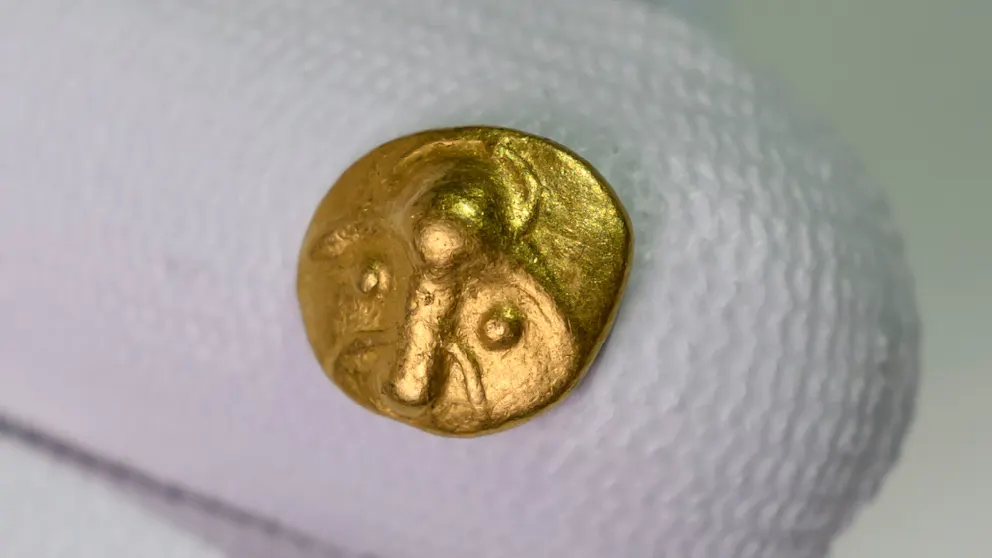
The “Rainbow Bowl” Legend
Due to its convex shape, the coin belongs to a class of Celtic gold pieces nicknamed “Regenbogenschüsselchen” — “rainbow bowls.” The term originates from old folk belief: where a rainbow touches the earth, a treasure lies buried. Farmers often found such bowl-shaped coins on their fields after heavy rain, reinforcing the myth that they had fallen from the sky.
Before this discovery, the oldest known Saxon coin was a silver Büschelquinar, found in 2007 near Zauschwitz and dated to the early first century BCE. The Gundorf gold coin now pushes Saxony’s monetary record back by nearly a century, providing solid evidence that the region maintained trade links with Celtic territories much earlier than assumed.
A Two-Gram Window into the Iron Age
At just two grams, the quarter stater may be the smallest artefact ever formally presented by the State Office. Yet its cultural weight is enormous. The coin represents elite contact zones at the northeastern edge of the Celtic world, where local communities interacted with long-distance traders across Central Europe.
For archaeologists, the find also demonstrates the scientific value of controlled metal-detecting programs. Since the Landesamt began certifying responsible detectorists, several new Celtic coins have surfaced — including one other gold piece without decoration — bringing Saxony’s total to eleven Celtic coins known to date.
The newly discovered Gundorf stater, now safely conserved and documented, will go on display in Dresden. It not only enriches Saxony’s archaeological record but also reinforces the role of collaboration between citizens and scientists in protecting cultural heritage.
Landesamt für Archäologie Sachsen (LfA)
Cover Image Credit: The 2,200-year-old Celtic gold coin — smaller than a one-cent piece — was presented in Dresden. Robert Michael / dpa.

